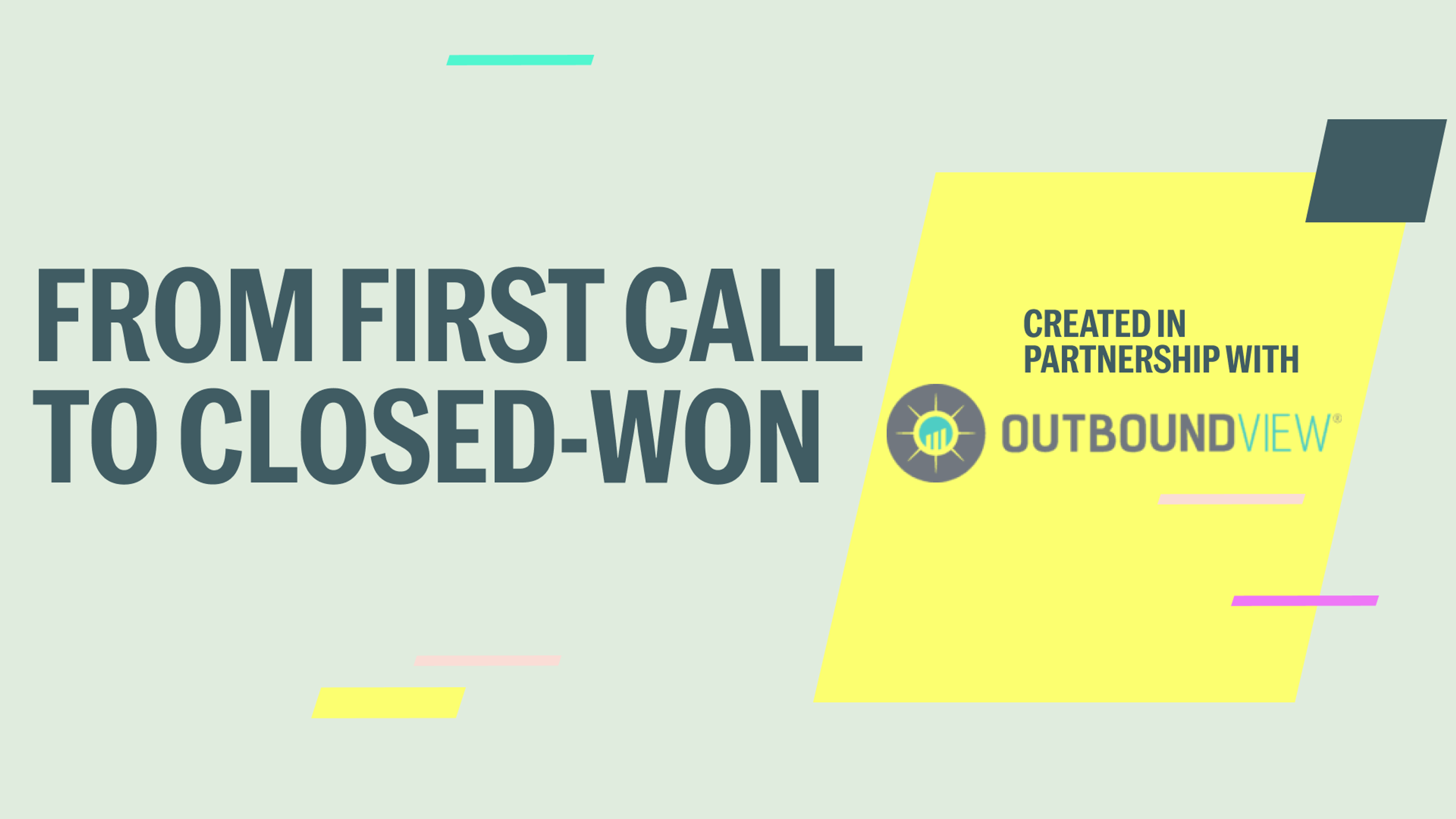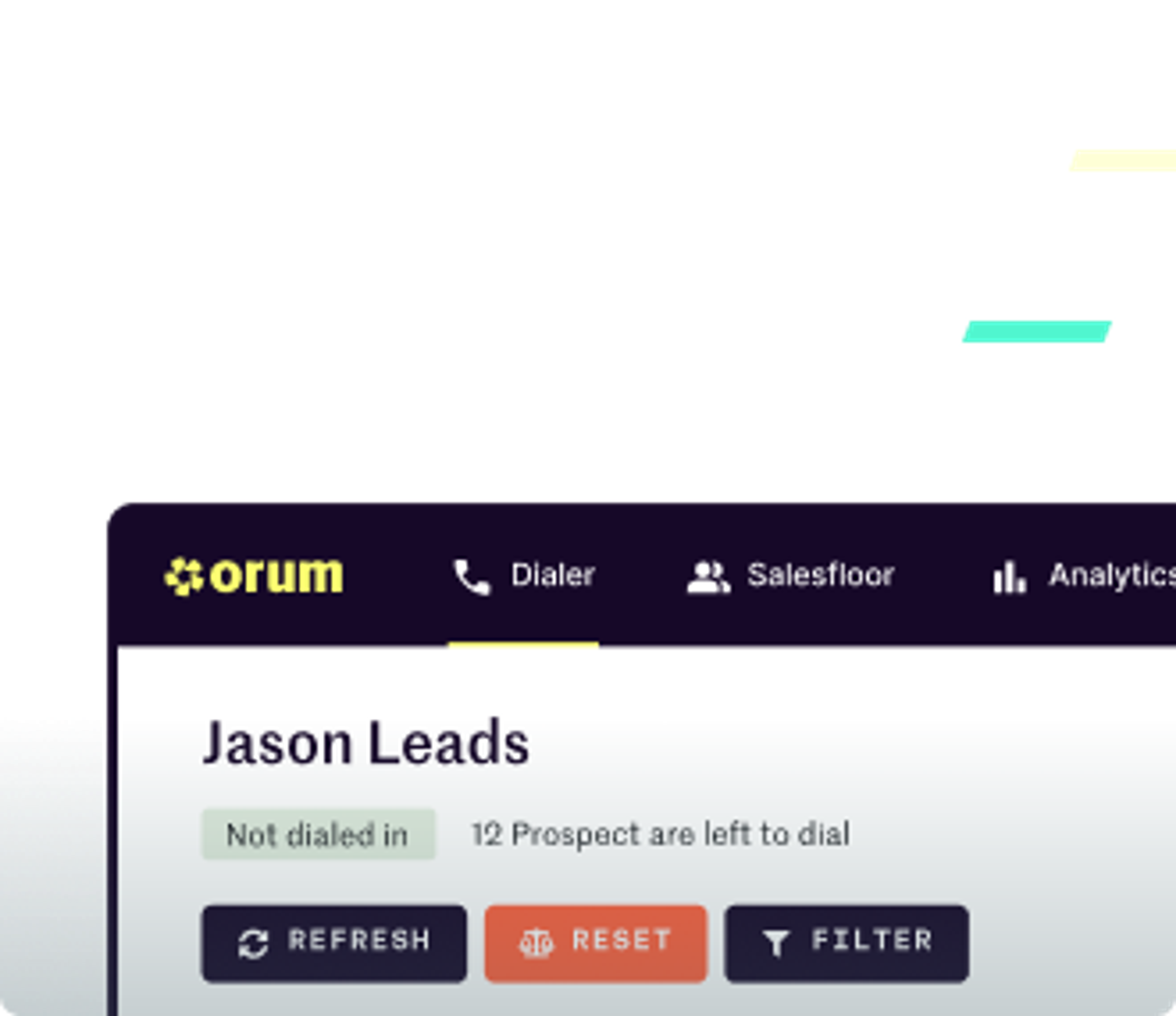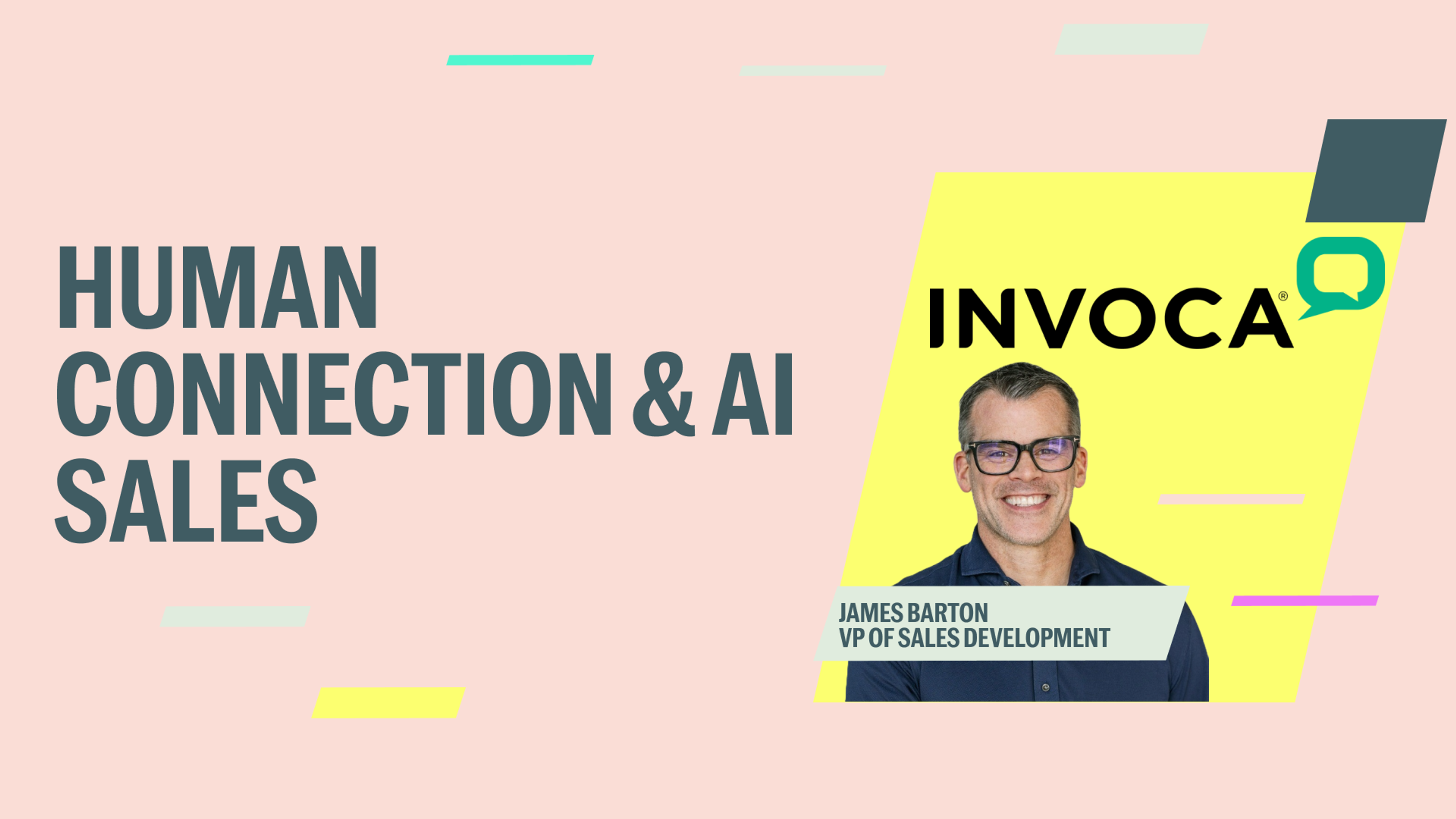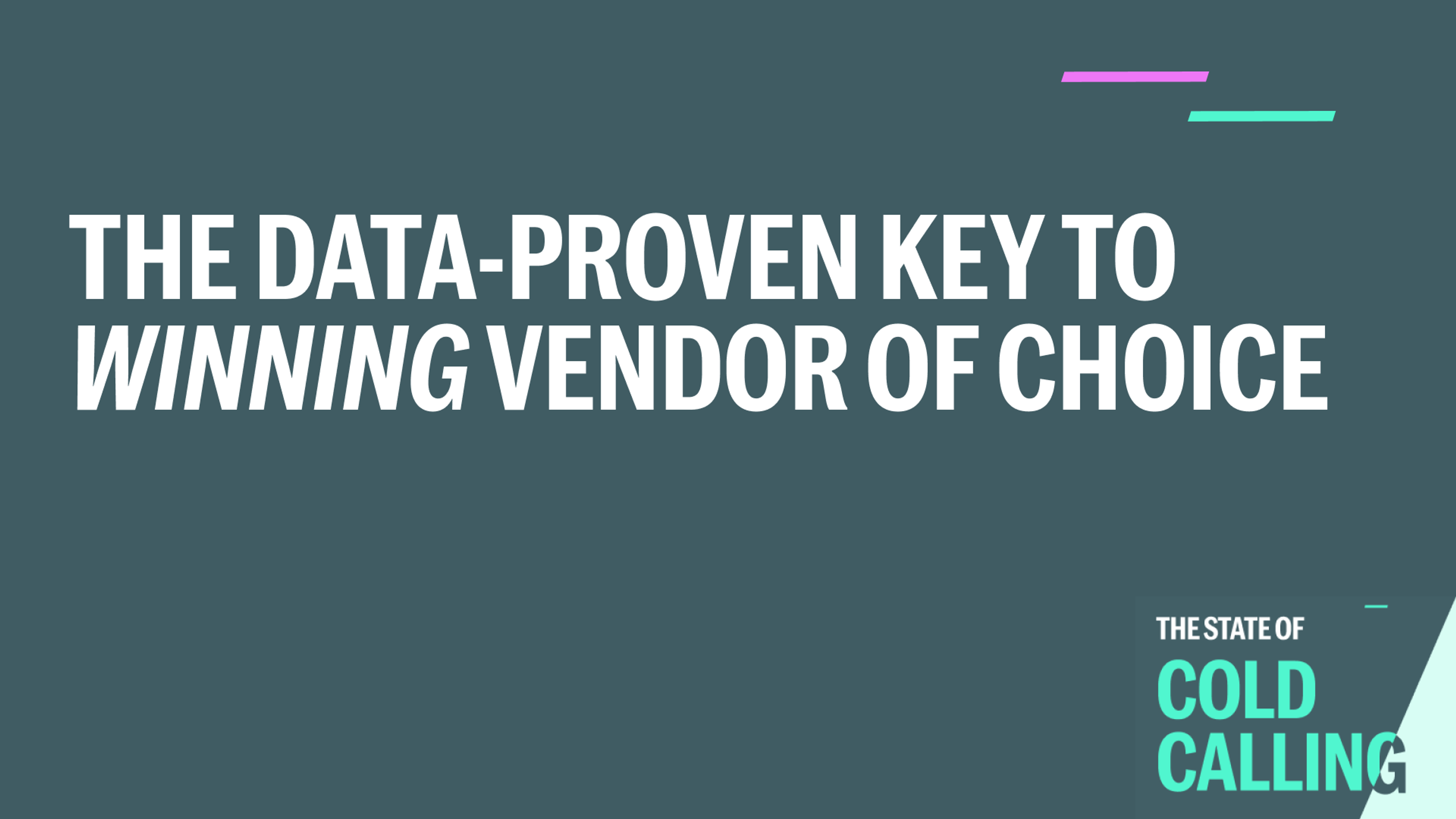From first call to closed-won


A Complete Guide to Turning Conversations Into Customers
By Orum & OutboundView
Orum is the AI Conversation Engine for your revenue team—powering smarter dials, faster connects, and context-aware AI agentic coaching to accelerate conversations and revenue.
OutboundView is a B2B appointment setting and cold lead conversion agency. They have worked with 200+ B2B customers to find and close sales opportunities. Check out coldleadconversion.com for 25+ free training modules on how to close cold leads.
Introduction: The Missing Link Between Dials and Deals
Every sales org talks about “pipeline,” but few teams truly master the bridge between first contact and closed-won.
The truth is, booking that first meeting is still the hardest part.
- Data pulled Orum’s State of Cold Calling & State of Sales Development reports
- The State of Sales Development found that 70% of teams generate at least half of their pipeline from phone conversations—and the highest-performing reps spend more than 11 hours per week researching and following up.
This guide is your blueprint for both halves of the journey:
- Getting the right people on the phone (Orum)
- Turning those meetings into revenue (Blake Johnston, CEO OutboundView)
Part 1: Getting the Right People on the Phone
1. The Cold Call Isn’t Dead; It’s Data-Driven
Phone outreach still dominates modern sales. 51% of all pipeline originates from calls (State of Sales Development). And when conversations happen, they convert. Calls remain 2.5× more likely to result in a booked meeting than email or LinkedIn outreach.
But dialing without a strategy wastes effort. Orum’s billion-call dataset shows that what separates top sellers is not volume, it’s precision.
- Call timing: Connect rates spike between 10 a.m. and noon and 4 – 5 p.m. local time.
- Call frequency: The best SDRs don’t stop after one attempt; they average 5.7 touches per prospect before connecting.
Persona focus: Admins, C-suite, and VPs respond differently, and the data shows exactly how.
2. Persona-Based Connection Strategy
Every persona answers differently and for different reasons. Orum’s research proves it:
| Persona | Avg. Connect Rate | Conversation Goal | Why They Matter |
|---|---|---|---|
| Admins & Office Managers | 7.8 % | Build trust + gather intel | Most under-dialed group but 2× more likely than average to answer. Perfect for multithreading. |
| Directors & Managers | 4.8 % | Validate problem + secure intro | Mid-funnel champions; strongest bridge to buying committees. |
| VPs | 3.8 % | Position value + get sponsorship | Time-poor but decisive; use warm references. |
| C-Suite | 4.0 % | Align strategically + confirm priority | Not unreachable — just require a compelling reason to listen. |
The biggest misconception?
That you should always call the decision-maker first. In reality, Admins are over 400% more likely to connect than VPs and often open doors that email never could.
“Admins are the gatekeepers, not the gate blockers.” – State of Cold Calling Admin Playbook
3. Timing, Cadence, and Sequence
Getting through isn’t luck. It’s math. Orum’s “When to call” heatmap shows precise windows and sequencing that boost connect rates:
- Best Days: Tuesday and Thursday.
- Best Times: 10 a.m. – 12 p.m. and 4 p.m. – 5 p.m. local.
- Call Patterns: Back-to-back calling (with a parallel dialer) increases live connects by 30 % on average.
- Follow-Up: Prospects who are called again within 24 hours of a missed attempt are 42 % more likely to eventually connect.
These micro-optimizations add up. A rep using Orum’s AI dialer in parallel mode typically achieves 5× as many live conversations per hour as manual dialing.
4. The Real Goal of the First Call
Not every conversation should aim to lead to a meeting. The State of Cold Calling data highlights that top sellers tailor their call goals by persona:
- Admins: Fact-finding and referral gathering.
- Managers/Directors: Qualification and pain validation.
- Executives: Strategic alignment and meeting confirmation.
Reps who adjust their purpose per persona are 1.6× more likely to book follow-up meetings.
The objective is momentum, not perfection. A clear next step, even if that’s another internal contact or a scheduled discovery.
5. Multithreading in Action
The best-performing orgs in The State of Sales Development combine multichannel outreach with multithreading within accounts. Teams that call multiple personas per account, rather than relying on a single contact, see 43% more meetings per account and higher overall conversion rates.
Example flow based on Orum’s persona data:
- Start with Admin or Ops: Establish context, confirm relevance.
- Move to Manager/Director: Validate pain and need.
- Engage VP or C-suite: Present alignment and secure next meeting.
This laddered approach not only boosts the number of meetings booked but also shortens sales cycles, since internal champions have already been prepped.
6. The Connect-Rate Myth: More Dials ≠ More Meetings
Volume alone doesn’t win anymore. Orum data shows that top performers, those in the top quartile of meetings booked, don’t focus on more activity. They target better.
- Reps in the top quartile averaged 12% fewer dials per day than their peers but booked 31% more meetings.
- These reps relied heavily on intent data and persona heatmaps to determine whom to call and when.
Quality conversations > quantity of attempts.
7. Conversation Velocity: From Connect to Calendar
Every second of talk time should move the deal forward. The best reps convert live conversations into meetings by:
- Referencing relevance: “We’re working with [competitor] on this same challenge.”
- Positioning next steps early: “If this sounds relevant, let’s block 20 minutes tomorrow to see how others in your role tackled this.”
- Ending with clarity: Re-state the value and send the invite immediately.
The first conversation sets the stage, but it’s only half the journey. Once that meeting is on the calendar, the real work begins: ensuring it holds, it delivers value, and it creates real pipeline momentum.
Give prospects a reason to keep your meeting
When building your pitch, you must give the prospect a very specific reason to join the first call. This is known as an Offer.
- An offer is a clear promise of value — it tells the prospect exactly what they’ll get out of engaging with you (time, information, results, or outcomes).
- It gives them a reason to take the next step — whether that’s booking a meeting, joining a call, or making a purchase, the offer must be compelling enough to act on.
- It builds momentum at each stage — strong offers move prospects from one step to the next (e.g., from a first call to a second) by providing specific, tangible benefits.

Part 2: From Meeting to Closed-Won
Before We Start - Call Recordings Are Required!
Every sales team needs a call recording device (Fathom, Fireflies, etc.) that records every call they make. You will use these call recordings to figure out exactly what is and isn’t working or your sales team. These recordings can also be used to create AI Roleplays in Orum’s AI Coaching Suite.
1. The Best Way to Reduce No-Shows
The first call begins with taking every possible step to ensure the prospect attends. Ensure your team follows a no-show process.
- Ensure the prospect fully understands the offer they are receiving. Prospects don’t want to show up to “learn more” - they want to get something specific out of the call, that’s your offer
- The AE needs to connect with the prospect on LinkedIn
- The AE needs to write a custom email as close to booking the meeting, explaining the benefit to the client and sharing any relevant case studies
- Call and/or send a text the day before to the prospect, confirming they are coming to the meeting
2. Pre-Call Education
This is where most companies really struggle. Before the first call even begins, your goal is to make sure prospects arrive informed and excited. When prospects show up and know your company, your value, and what they’re getting out of the call, they convert at a much higher rate.
- Educate, don’t sell. Use 3–5 light, value-focused touchpoints (emails, videos, LinkedIn, SMS) to explain what you do and what the meeting will accomplish. This is a mix between marketing automation and information from sales (a salesperson cannot send 6 emails before a first call, that doesn’t look good)
- Frame the meeting’s purpose. Prospects should already know why they’re meeting, what they’ll get out of it, and what outcomes to expect.
- Reduce wasted time. Save yourself the 10 minutes of reframing why the prospect is there, who you are, etc., so you can get into the bulk of the meeting.
3. How to Begin a First Call
The opening sets the tone, direction, and confidence.
- Reconfirm the purpose. Start with a quick recap of what they signed up for — this aligns expectations.
- Preview the second call offer. Early in the conversation, mention what the next step looks like (e.g., “If this goes well, we’ll schedule a strategic planning session to dive deeper”).
- Build rapport fast. Focus on relevance — their industry, peers, or challenges — to establish credibility and trust within the first few minutes.
- Let the prospect know where they are in your sales process. Don’t forget to tell the prospect where they’re at and where they’re headed.
6. Everything Drives Toward a Second Call
The second call is where real business gets done — every step should funnel prospects there.
- Make it a branded, valuable experience. It should sound worth attending — not a sales pitch but a working session.
- Focus the first call on earning that next meeting. Every question, story, and insight should set up why the second call is the logical next step.
- Measure success by conversion, not conversation. The goal isn’t how good the call felt — it’s whether it leads to another one.
7. Communication Between First and Second Calls
The time between calls is when deals either move forward or die.
- Send tailored follow-ups. Reinforce what was discussed and preview what’s next (agenda, deliverables, or materials).
- Add light education. Share a short video, case study, or insight that keeps them engaged.
- Stay proactive. Touch base within 24–48 hours; momentum fades fast without structured communication.
Getting the Prospect to a Second Call
If you’ve gotten the prospect to a second call, you’ve won a significant battle in Cold Lead Conversion. This means you booked the call, they showed up for the first meeting, and they gained enough value to spend more time with you.
At this point in the sales process, you should know how to drive toward a close — it’s a series of miniature offers along the way.
If you want to learn more about cold lead conversion and learn how to close more deals, visit www.coldleadconversion.com. We offer 25+ free training modules on how to convert cold leads.
If you have any questions, you can always reach me directly.





